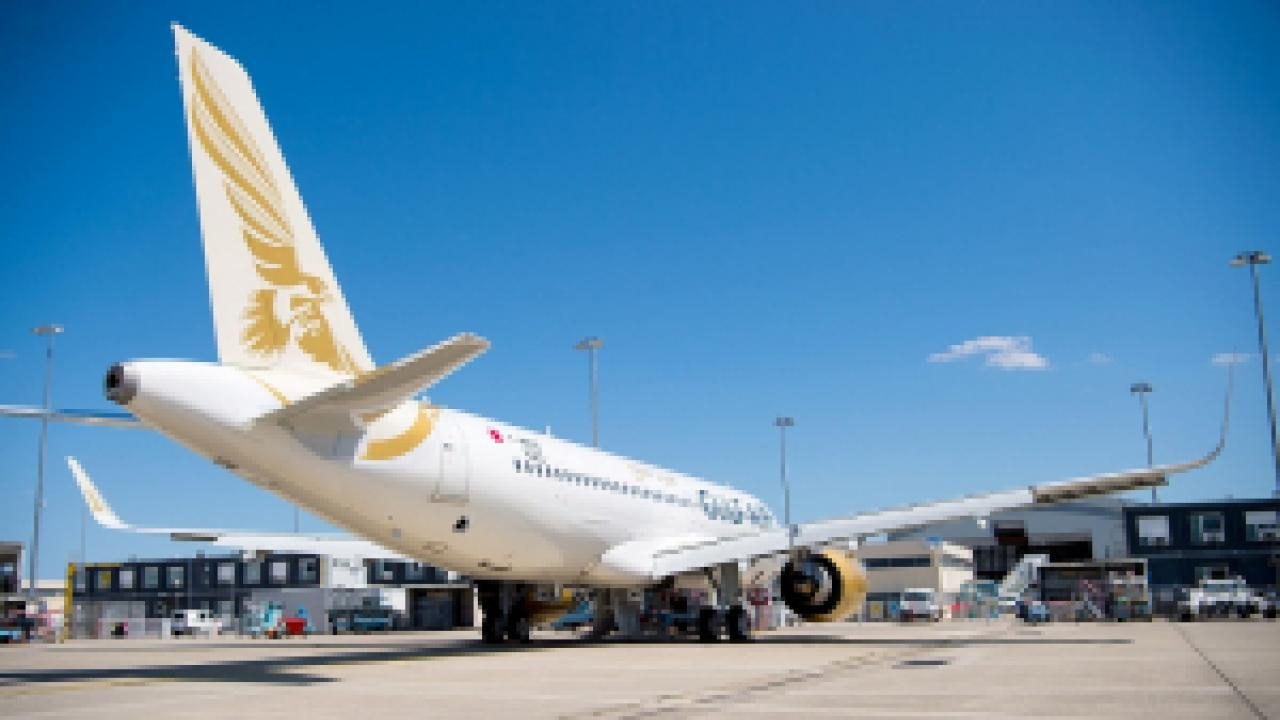AIME: Lufthansa Technik's new head in the Gulf

As Lufthansa Technik’s newly appointed general manager for the Gulf, Ziad al Hazmi is responsible for the provision of maintenance, repair and overhaul services to some of the top airlines in the region. His customers include Gulf Air, Oman Air, Qatar Airways and Saudia, and he’s confident of adding to the list in the next few years.
“The growth that’s happening here makes us feel quite positive that there is plenty of further potential,” says this Sharjah and London-educated aeronautical engineer. “Our business here is definitely growing, thanks to the fleet renewal that is going on and to the carriers’ desire for long-term MRO solutions that save them money and allow them to focus on the core business of running the airline. Our total support packages are proving very attractive to them.”
The Gulf airlines’ dynamism is now creating another and quite different opportunity for Lufthansa Technik, according to al Hazmi. The company’s Hamburg site is home to its Cabin Innovation Centre, once a “skunk works” designed to hothouse bright ideas for cabin systems and now the source of a stream of fully industrialised products for an expanding clientele in the corporate and VIP sectors.
These offerings include the ultra-stylish and powerful NICE cabin network and the NICEview 3D moving-map and passenger information system. “Right now there is growing airline interest in this product line, prompted by plans for cabin upgrades,” reports al Hazmi. “We’re getting enquiries and requests from our customers – we’re beginning to see a lot of potential for these systems in air transport.”
Australian Andrew Muirhead is director of the Cabin Innovation business unit in Hamburg. “We’re not trying to be a big mainstream supplier of inflight entertainment to the air transport industry,” he says. “We see ourselves rather as providing niche products that will help our airline customers to differentiate themselves.” Any carrier that opts for even a fraction of what Muirhead and his team are already delivering to corporate and VIP operators will have no difficulty standing out from the crowd.
Designed originally for the big VIP widebody and narrowbody airframes that Lufthansa Technik completes, NICE has since been selected as a standard option on the Bombardier Challenger 300 and new Learjet 85. It has also been retrofitted to the Challenger 605, Global 5000 and Global XRS.
Aboard the Challenger 300 NICE supports a wide range of passenger entertainment and cabin environment management functions, including the world’s first iPod docking station for a purpose-designed business jet. The docking station streams the audio output on to the network for delivery via cabin-lining flat-panel speakers. iPod output and all other cabin functions can be controlled at each seat through a graphical user interface neatly integrated into the cabin lining at elbow height.
The basic Challenger implementation combines the high-capacity Ethernet network with a pair of 20in LCD screens, a digital amplifier feeding the high-fidelity speakers, an interface to other aircraft systems to support things like cabin lighting and temperature control, and a DVD player.
Options include the addition of Lufthansa Technik’s Mobile Access Router to support in-cabin wireless and air-to-ground connectivity, interfaces to third-party systems such as digital cameras, moving-map systems and XM Radio, multiple-channel surround-sound, and an in-house-developed audio/video-on-demand (AVOD) in-flight entertainment server.
Development continues, and recent additions to NICE include the ability to use an iPhone and custom-designed apps to control the system, integration of Blu-Ray content source equipment with high-definition-capable screens, and a new graphical user interface. Due for introduction this quarter is NICEstuff, a service that allows customers to choose from a wide variety of Internet content and have it delivered to the onboard server for display on demand in the cabin.
The executive-centric NICE is the Innovation unit’s flagship, but they’re not short of ideas for improvements to the experience of the ordinary airline passenger.
“We’re working on an idea to improve the comfort of economy-class seats,” says Muirhead. “We observed how people try to make themselves comfortable in economy and have put together a prototype solution that we think will help. Now we’re talking to seat manufacturers who might be interested in integrating it into their products.”
Middle Eastern airlines are among the first in the world to allow their passengers to make mobile phone calls in the cabin. “We’ve looked at what other people are doing and we think it can be made even more user-friendly,” says Muirhead. “There’s definitely a better way of doing things compared with what’s currently on offer, and we may be able to say more about it later this year.”
The Hamburg think-tank is also tackling two of the problems that can give airline managements nightmares – passenger illness and cabin equipment failures.
British company RDT markets the Tempus telemedicine system, designed to help cabin crew to gather diagnostic information from ailing passengers, transmit it to doctors on the ground and receive advice on treatment by return. Muirhead’s team has integrated their Mobile Access Router (MAR) with Tempus to help manage the satellite and other links needed to communicate with the ground. “MAR automatically identifies the Tempus unit when it’s turned on and ensures that it gets the maximum available communications bandwidth,” he says.
Passengers these days expect such a high level of inflight entertainment that the airline’s image can suffer badly when the system fails. Lufthansa Technik is exploring ways of monitoring system status to ensure that failures are kept to a minimum and rectified quickly when they do happen.
“We’re researching the use of cellular and other communications technologies to support maintenance of cabin systems,” says Muirhead. “This could ultimately lead to a system to gather all of the maintenance data from the cabin, automatically transfer it to the engineers after the aircraft has landed, and mine it for information of significance.”
The Hamburg Cabin Innovation Centre started life in a modest way – the staff called their building the “Garage”. But last year the operation moved into a brand-new purpose-built facility, complete with showroom, environmental chamber, electromagnetic compatibility equipment, and vibration and crash test facilities. Says Muirhead: “The new premises symbolise Lufthansa Technik’s commitment to making improvements in the cabin and staying on top of the trends in this rapidly evolving sector.”
Stay up to date
Subscribe to the free Times Aerospace newsletter and receive the latest content every week. We'll never share your email address.

